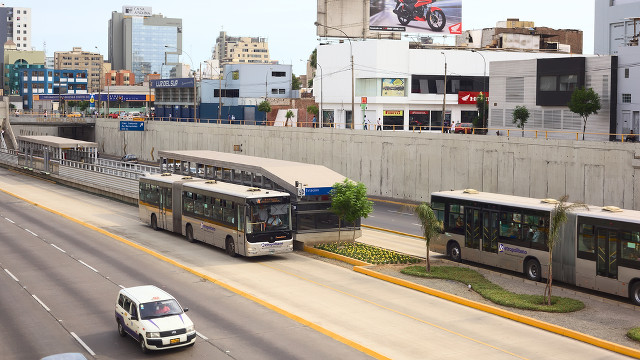SUMMARY
This is AI generated summarization, which may have errors. For context, always refer to the full article.

MANILA, Philippines – The citizens’ call for government to devote half of the road to commuters instead of reserving the entire road for private car owners isn’t falling on deaf ears, says the Department of Transportation and Communication (DOTC).
According to DOTC Assistant Secretary for Planning Sherielysse Reyes-Bonifacio, the Share the Road concept may be realized by government plans to build bus rapid transit systems and walkways in the country’s urban areas.
“The goal is for the private car owners to use public transport. How do you do that? By improving public transport systems so hopefully you’ll get less cars on the road. We’re pretty confident that it would work,” she told Rappler last Wednesday, April 16.
Supporters of the Share the Road Movement have filed a case in the Supreme Court holding 8 government agencies, including DOTC, accountable for not developing public transport systems and perpetuating a system that gives private car users dominion on the roads.
They called on government to physically divide all roads in half – one half for private motor vehicles, the other for collective transport systems like trains, bus rapid transit, covered walkways and bike lanes.
Proponents of the campaign also argued that motor vehicles are responsible for the air pollution that continues to plague many Philippine cities.
According to the DENR, 80% of Metro Manila air pollution comes from motor vehicles. (READ: Outdoor air pollution a leading cause of cancer – WHO)
Benefits of BRT
The DOTC is aware of the movement and plans to discuss with the movement’s leader, renowned environmental lawyer Antonio Oposa Jr, how the agency can implement road-sharing.
The bus rapid transit (BRT) systems planned for Metro Manila and Cebu is one way road-sharing can become a reality.
Putting up BRT will physically divide the roads because it requires a dedicated bus lane.
Here are the key features of a BRT system:
- Bus-only lanes that make travel time faster because buses are not delayed by other vehicles on the road.
- Dedicated lanes are in the center of the road to keep buses away from busy curb-sides that can also cause delays.
- Fare collection is done at the station instead of on board the bus to eliminate delays caused by passengers paying the driver or conductor.
- Buses will be given priority at intersections.
- Platform for boarding will be level with the bus floor for quick and easy boarding.
The DOTC is putting up a 28-kilometer BRT worth P4.65 billion. The system will run from Manila City Hall to Fairview in Quezon City, passing through Quezon Avenue and Commonwealth Avenue.
Talks for a BRT system in Davao City are also underway.
Many of the BRT routes are set to replace existing jeepney routes, such as the ones along Quezon Avenue.
Though many operators stand to lose business, the shift is unavoidable because the population growth in these cities requires higher capacity transport systems, said Bonifacio.
The jeeps of old will have to be replaced by BRTs which are more efficient and can accommodate more passengers.
She also gave assurances that the BRT system can provide employment for jeepney drivers.
This also doesn’t mean jeeps, tricycles and pedicabs have no place in Philippine transportation. They would be more suited to smaller streets that “feed” into the major traffic corridors.
More walkways for commuters
Commuters will also be relieved to know that the DOTC is eyeing the addition of strategically placed walkways in urban areas.
The Ortigas Walkways project, a partnership with the Asian Development Bank (ADB), has been approved by the National Economic and Development Authority (NEDA).
The project aims to connect the entire Ortigas Central Business District using walkways.
The first phase of the project to receive funding is a walkway connecting SM Megamall, Robinsons Galleria and Shangri-La Plaza allowing MRT users to easily access all the MRT stations using a single, continuous passage.
ADB will provide the engineering design while government provides funding for the civil works.
“We hope to bid it out this year and start construction by 2015,” said Bonifacio.
The project’s impacts are limited, she admits, because it involves only the Ortigas hub but “it’s a model we can follow in other areas. It’s just a start.”
Car-less cities
With such planned improvements for public transportation, it’s not impossible to expect that many private vehicle users will opt to commute and leave their cars in the garage.
“All of our studies show it’s not going to be an issue. Because gas and parking are expensive. Maintaining a car is expensive,” said Bonifacio.
Many cities are considering measures to lessen cars on their roads to ease traffic. Makati is considering making motor vehicle users pay a toll when they enter the city as a form of “congestion charging.”
Bonifacio Global City in Taguig may one day not provide parking spaces. But the city is improving its bus and shuttle system.
“Their idea is to provide parking space outside BGC. You leave your car there then you take the shuttles which can bring you anywhere in BGC.”
Another DOTC project underway is the addition of e-jeepneys to replace the crude conventional jeepneys that are often air pollution culprits. (READ: COMET e-shuttles to start operations by April)
While the financing scheme to help conventional jeepney operators and drivers adopt the electric vehicles is still being finalized, the DOTC is already expecting the release of funds for the project. – Rappler.com
Bus rapid transit image from Shutterstock
Walkway image from Shutterstock
Add a comment
How does this make you feel?
There are no comments yet. Add your comment to start the conversation.